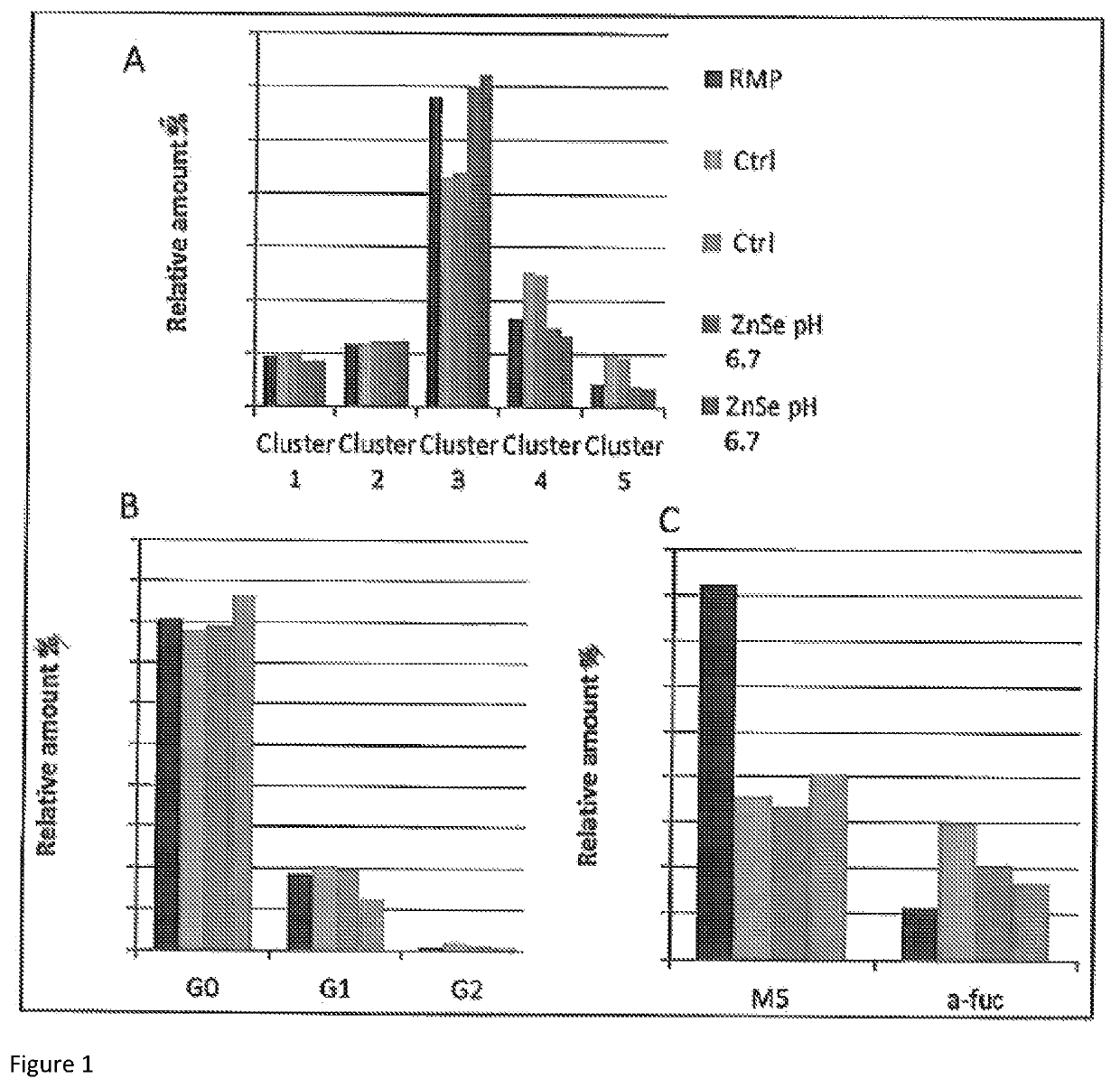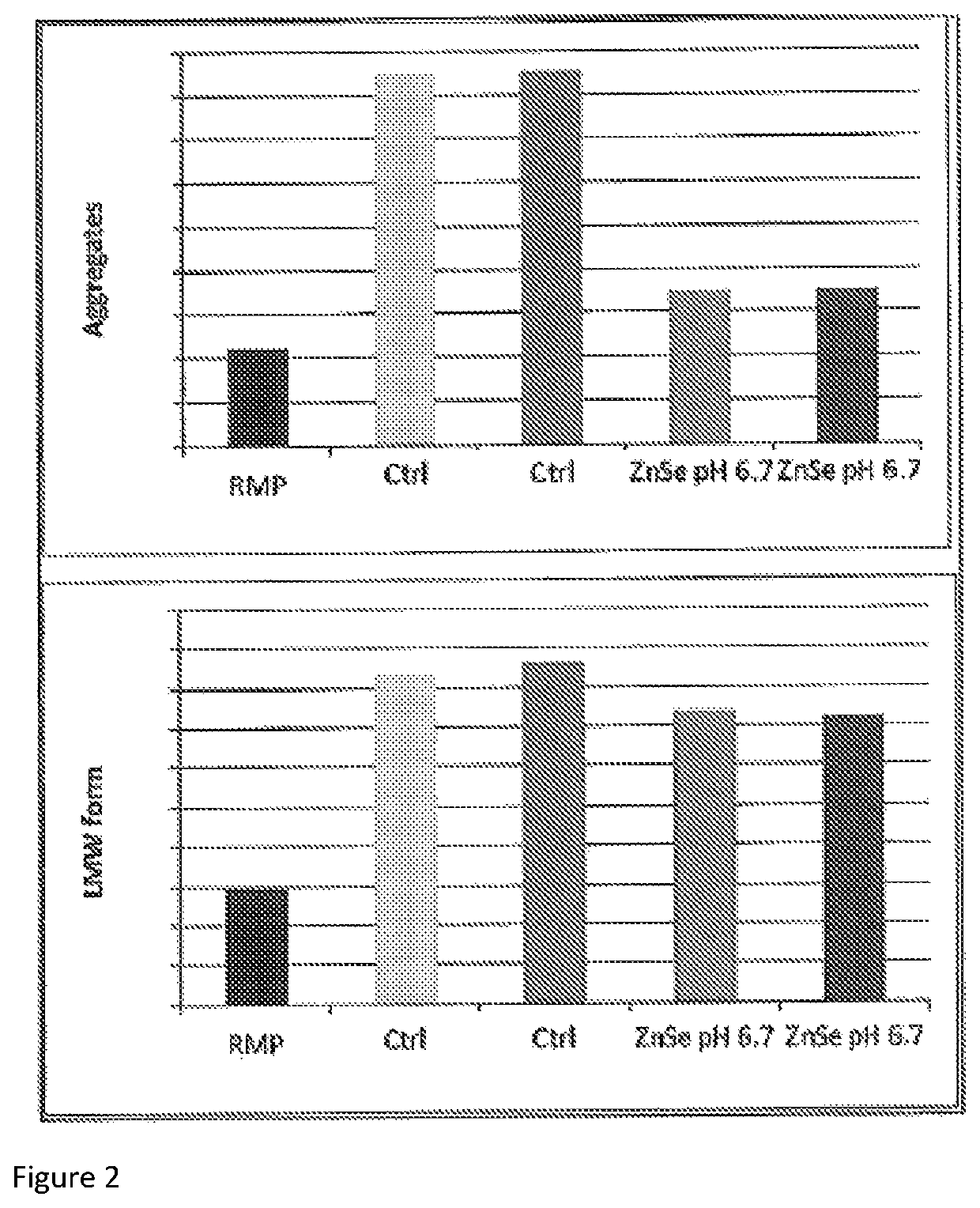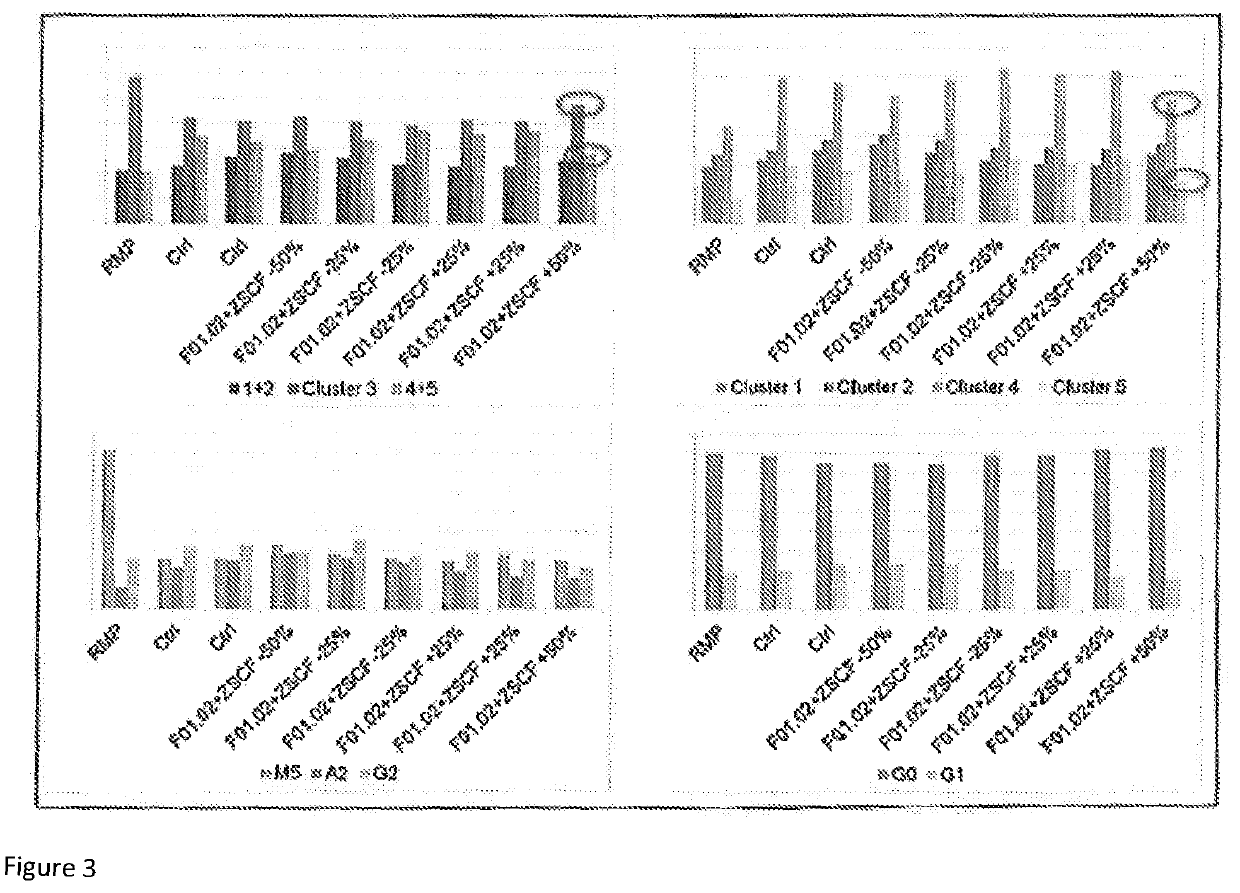Methods for increasing biosimilarity
a biosimilarity and biosimilarity technology, applied in the field of methods for increasing biosimilarity, can solve the problems of immunologically adverse reactions, affecting stability but also activity, etc., and achieve the effect of increasing the biosimilarity of a tnf binding protein and increasing the concentration of a metal ion
- Summary
- Abstract
- Description
- Claims
- Application Information
AI Technical Summary
Benefits of technology
Problems solved by technology
Method used
Image
Examples
example 1
[0102]Previous experiments performed suggested a slight positive impact of zinc and selenium (Zn—Se) on quality data. Indeed, the use of Zn—Se trace elements reduced acidic charge variants while low pH shift increased neutral and decreased basic charge variants. Combining these two conditions was therefore tested as a proof of concept for simultaneously modifying process parameters to obtain a charge profile similar to reference material.
[0103]Table 1 shows experimental conditions.
[0104]
TABLE 1Test ConditionsProductionLegendmediumFeedspH regulationon graphsstandard + Feed containingfree pH betweenControlZSCFZSCF added on 7.1day 3, 5, 7 and 10.and 6.75)standard +Feed containingpH 6.60 ± 0.05pH 6.7Zn-SeZn-Seregulated with CO2added on day 3, 5, 7 and 10.
[0105]As shown in FIG. 1, Zn—Se and low pH had a positive impact on neutral isoforms (increased), basic isoforms (decreased), mannose-5 (slight increase) and a-fucosylated forms (slight decrease) regarding biosimilarity to RMP. Combinin...
example 2
[0106]Zinc
[0107]To test the impact of Zn, samples were tested with twice the Zn concentration or no Zn in the Feed. Conditions are described in Table 2.
[0108]
TABLE 2Test ConditionsSTProduction mediumFeedCtrl (1X Zn)standard +With ZSCFZSCF2X ZnstandardWithout ZSCF0X ZnstandardWithout ZSCFZSCF = zinc, selenium, copper, iron
[0109]Titres tended to be slightly higher in the absence of Zn.
[0110]Removing Zn had a slight positive impact on clusters 1 and 2 (decreased) and a negative impact on cluster 4 (increased), on mannose-5 (decreased) and on aggregates (increased) regarding biosimilarity to RMP.
example 3
[0111]Selenium
[0112]To test the impact of Se, samples were tested with twice the Se concentration or no Se in the Feed. Conditions are described in Table 3.
[0113]
TABLE 3Test ConditionsSTProduction mediumFeedCtrl (1X Se)standard +With ZSCFZSCF2X SestandardWithout ZSCF0X SestandardWithout ZSCF
[0114]Removing Se had a slight positive impact on clusters 4 & 5 (decreased) and on a-fucosylated forms (decreased), and a negative impact on mannose-5 (decreased) regarding biosimilarity to RMP. Removing Se had no impact on the level of aggregates.
PUM
| Property | Measurement | Unit |
|---|---|---|
| concentration | aaaaa | aaaaa |
| concentration | aaaaa | aaaaa |
| concentration | aaaaa | aaaaa |
Abstract
Description
Claims
Application Information
 Login to View More
Login to View More - R&D
- Intellectual Property
- Life Sciences
- Materials
- Tech Scout
- Unparalleled Data Quality
- Higher Quality Content
- 60% Fewer Hallucinations
Browse by: Latest US Patents, China's latest patents, Technical Efficacy Thesaurus, Application Domain, Technology Topic, Popular Technical Reports.
© 2025 PatSnap. All rights reserved.Legal|Privacy policy|Modern Slavery Act Transparency Statement|Sitemap|About US| Contact US: help@patsnap.com



